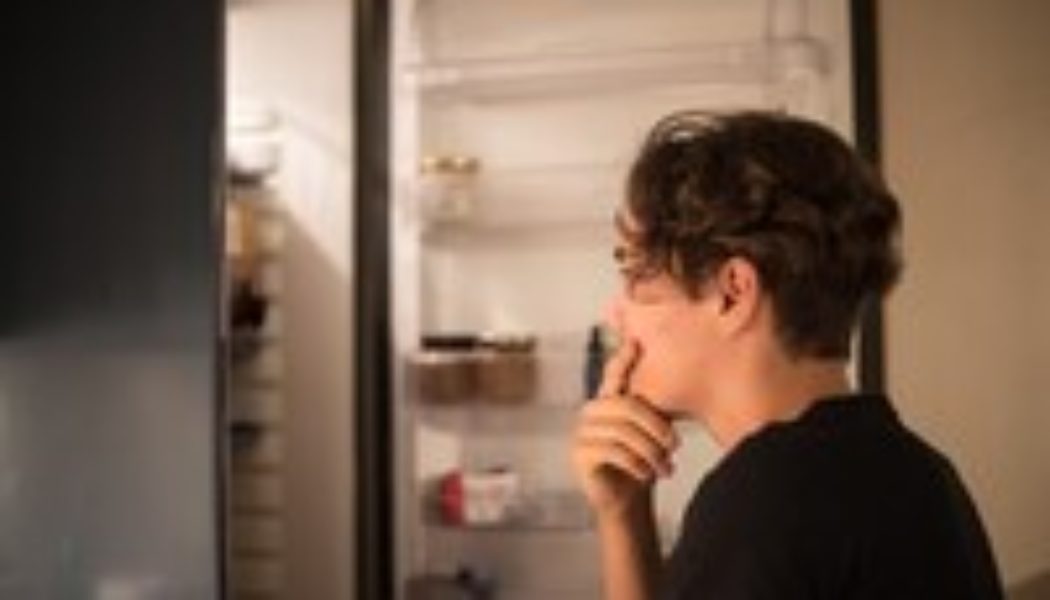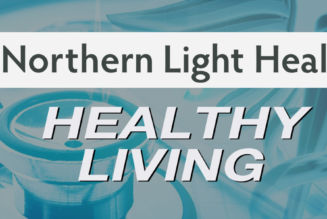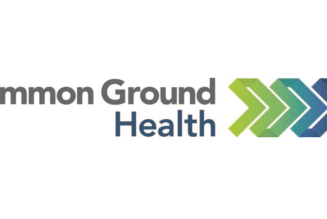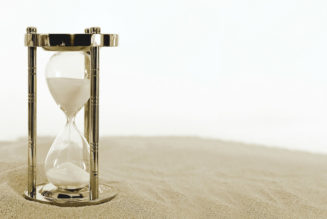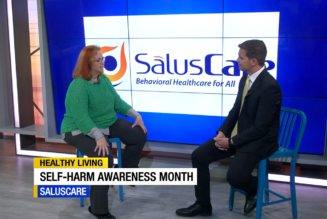
During a recent summer camp pickup, my daughter Madelyn handed me two paper plates. On one plate, there were pictures of an apple, salad, salmon, grilled chicken and chicken nuggets. On the other, an ice cream sundae, nachos, cake, a hamburger and a baked potato. I instinctively knew what her assignment had been, but I asked my daughter to describe it anyway.
“We had to put healthy foods on one plate and unhealthy foods on the other one,” she told me. Her teacher, who was standing beside us, looked at the pictures and told Madelyn that the chicken nuggets probably should have gone on the unhealthy plate and not the healthy one.
I saw the look of confusion on my 7-year-old daughter’s face and was taken back in time to my seventh-grade health class, where I learned to categorize foods as good and bad. The teacher taught us that we needed to be healthy by eating fruit and vegetables, and that we should avoid eating too much “junk food” because doing so would make us unhealthy.
I was in a vulnerable spot, having just lost my mother to metastatic breast cancer a few months prior. I had watched my mom’s body deteriorate during the three years that she was sick, and in the aftermath of her death, I grew fearful of doing anything that was deemed unhealthy. Shortly after learning to label foods in health class, I began to worry that eating “unhealthy” foods might make me sick like my mom. And as a perfectionistic, straight-A student, I thought I needed to follow my teacher’s directives by avoiding them. I started restricting my food intake, first slowly, then drastically. Within a year, I was diagnosed with anorexia nervosa — a disorder that wreaked havoc on my mind and body for many years to come.
The health class was not the sole cause of my eating disorder, but it was one of the contributing factors. Twenty-five years later, it’s still commonplace for schools to teach kids how to label food, even though research has shown that exercises like these can trigger eating disorders.
“I feel like schools are doing the best that they can, and I think they’re doing what they believe is the right step toward helping people make good food choices,” said Robert Mendiola, an Austin-based registered dietitian nutritionist who specializes in eating disorders. “But I also think it starts planting these seeds that turn into the ways we think about food for a really, really long time.”
Mendiola struggled with an eating disorder during his teenage years and now considers himself to be fully recovered. Though he wasn’t ever on the receiving end of detrimental “healthy eating” lessons, he’s seen eating disorder patients who have been.
A chart review of young patients treated for anorexia at one hospital from 2015 to 2020 found that healthy eating education was a trigger for 14 percent of the patients, and that early adolescents were especially vulnerable.
“The most common origin story that I hear from parents for their child’s eating disorder is an attempt to eat ‘healthier,’ often based on messages they’re getting from school and from the larger culture,” said Oona Hanson, a family mentor at Equip, an eating disorder treatment program. “Other than an anaphylactic allergy, there’s nothing in a food that can do more harm to a child than fear of food. The intention to have kids be healthy is great, but unfortunately, a lot of what we’re doing is counterproductive.”
Some children who are taught to avoid “bad” foods, for instance, may end up being more drawn to them. “Forbidden fruit tastes the sweetest,” Hanson noted. On the flip side, children who tend to be more anxious or rule-following may grow fearful of “bad” foods and stop eating them altogether, just as I did. “It can really lead them down a road of more and more restriction,” said Hanson, “and that’s where we see younger and younger kids developing eating disorders like anorexia.”
The Centers for Disease Control and Prevention says nutrition education should be a vital part of health education programs because it “empowers children with knowledge and skills to make healthy food and beverage choices.” Some would argue this is especially important at a time when an estimated 1 in 5 U.S. children is obese. But while nutrition education is a good idea in theory, in practice it often falls short. Many nutrition education exercises are rooted in diet culture and anti-fat bias, with an emphasis on “clean eating,” food-labeling exercises and food diaries, in which students are asked to track how much they eat and exercise.
Gabi Dobrot’s daughter Ana was asked to keep a food diary as part of a high school physical education class in 2020. Soon after Ana began tracking her food intake and exercise, she insisted on preparing her own meals. Dobrot was initially relieved that one of her children wanted to help with food prep. But as the weeks passed, she noticed that Ana — a competitive gymnast and straight-A student — was eating significantly less and exercising more. Ana tracked these behaviors in her food diary and ended up getting an A+ on the assignment.
“We assume that due to pandemic-induced chaos, she was graded on completion, and her actual numbers were not checked, but getting an A+ for displaying evident symptoms of restriction and overexercise reinforced her behaviors,” said Dobrot, who lives in Farmington, N.Y. Within months of completing the assignment, Ana was diagnosed with anorexia nervosa and hospitalized.
The assignment came at a crucial time, when Ana was “worried about losing her gymnastics skills during quarantine, about becoming sedentary, and about not eating ‘well,’ or ‘healthy,’” said Dobrot, whose daughter is now 18 and in recovery. “The school assignment validated exactly what the illness she was predisposed to had hoped: a very low food intake and a large amount of strenuous exercise were a great idea and that it was healthy and necessary to have such a regimen.”
Dobrot wishes that schools’ curricula would be updated to include more education and awareness around eating disorders. She also encourages teachers to consider key questions before teaching children about nutrition, including: What motivates me to teach these “healthy eating” lessons? Do my own food choices stir up feelings of fear, shame or guilt? If so, can I explore these feelings before teaching children about food choices?
Shannon Gillikin, a kindergarten teacher in Charlottesville, said she used to police her students’ food choices by telling them to bring healthier snacks and to drink water instead of juice. But she has stopped doing this in recent years.
“I think a lot of it has to do with my own personal journey of unlearning diet culture for myself and learning what intuitive eating is for myself,” said Gillikin, who is entering her 14th year of teaching. She also recognizes that it’s not fair to criticize kindergartners for their food choices when they’re not the ones going grocery shopping or doing food prep. “As a White person of privilege, I’ve learned more about all the structures that surround my students’ lives like, do they live in a food desert? Are they on federal assistance for food, which limits what they can buy? I want my students to feel good about the choices that they can make and also honor whatever their parents have contributed.”
While teaching a “Happy Healthy Me” unit, Gillikin was supposed to read a series of books focused on healthy living, including “Edible Colors” (a book about eating produce); and “Jack and the Hungry Giant” (a retelling of “Jack and the Beanstalk” in which the giant uses the USDA’s MyPlate nutrition model to make a meal for Jack). Gillikin worried that the books would lend themselves to food labeling, so with permission from her school’s literacy director, she did away with them and read culturally inclusive fairy tales instead.
Throughout the school year, Gillikin tries to give her students a richer vocabulary for describing food by encouraging them to focus on its texture and taste, rather than its “healthy” or “unhealthy” qualities. “I tell my students that no food is inherently good or bad,” Gillikin said. “I tell them that food is fuel, and you need different kinds of fuel at different times.” She also encourages conversations around the students’ own food traditions and embraces the expression “don’t yuk on my yum.” “We’re teaching them to be respectful of each other’s food choices so that hopefully as adults, they’re more curious than judgmental.”
During a call with the director of my daughter’s day care, I shared some of Gillikin’s ideas and opened up about my own experiences with anorexia. I spoke freely about the harmful effects of food labeling — both as a woman in recovery from anorexia and as a mother who wants to protect my son and daughter from the disorder that stole so many years of my life. I know that no matter how hard I try to shield my children from an eating disorder, there will always be external factors outside of my control — school assignments, social media, genetics. Sometimes, the list feels unbearably long. My husband and I try to teach our children the best we can at home, by avoiding food labels, refraining from commenting negatively on our bodies, and eating food together as a family.
A few days after my daughter’s assignment, I bought some pints of ice cream and made homemade sundaes for Madelyn and my son Tucker.
“This is soooo yummy!” Madelyn said, licking her sticky fingers.
“SO yummy!” Tucker echoed, his blue eyes shining.
“You’re soooo right!” I agreed.
I dug my spoon into my salted caramel ice cream and enjoyed every last bite.
Related resources: The National Alliance for Eating Disorders and Sunny Side Up Nutrition have created five letters that caregivers can download, personalize, and share with teachers to raise awareness and address potential issues around nutrition education.
Mallary Tenore Tarpley is a journalism professor at the University of Texas at Austin. She’s the author of the forthcoming book, “Slip: Recovery, Sickness & the Space in Between,” an examination of the under-discussed complexities of eating disorders and recovery.
